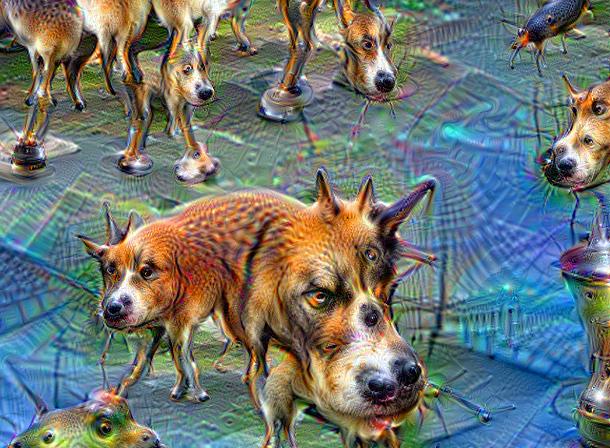Artificial Creativity — a Historical Computer Sciences View
Lectures by Maarten H. Lamers (Feb 2019)
Ever since people have considered intelligent machines, they have also considered whether machines could be creative. In fact, questions surrounding artificial creativity are closely linked to those of artificial intelligence and machine learning.
Can we model creativity and could it be the result of computation? Would we want creative computers, and why? Are artificial intelligence and artificial creativity really different? What does a dog-jellyfish look like?
With the current hype regarding machine learning, more and more creative machines are built. Computers are composing music, writing cooking recipes, painting "artworks", even writing jokes. The outcomes range from being impressive to utter crap.
Over time, many interesting thinkers have formulated their views on what creativity for machines could mean, or how it could be brought about. We take a tour along the ideas of Ada Lovelace in the 19th century, Alan Turing (1950), Marvin Minsky (1982) and Douglas Hofstadter (1982).

Photo: Margaret Boden (photo source)
Interesting as their ideas may be, it was Margaret Boden who in the 1990's attempted to bridge the gap between the bottom-up builders of creative machines and the top-down thinkers that history provides us with. We discuss her framework and use it to contextualize historically and contemporary relevant computer-generated output.
From this analysis we gain an overview of what computers can do, but more importantly what they cannot yet. Moreover, we uncover the importance of machine learning as being the "science of conceptual spaces", which links back strongly to the thoughts of Alan Turing and Douglas Hofstadter.
Machine learning, being the computational manipulation of concept spaces, offers the methods for computers to be creative.
We end by venturing into the first steps of transformational creativity, as defined by Margaret Boden, through machine learning. And surprisingly, this is where Google's "Deep Dreaming" plays an important role.

Photo: outcome of 50 Deep Dream iterations on a jellyfish photo, using a dog-recognizer (2015, photo source).
Lectures
"Artificial Creativity — a Historical Computer Sciences View" was taught by me on several occasions, for example at Leiden University, HOVO, Dutch Ministry of Infrastructure and Water management, Dutch Ministry of the Interior and Kingdom Relations, and the Royal Academy of Art (Den Haag). It comes with a small reader, and will be further developed in the near future. It does not (yet) come with exercises, but if you have suggestions then contact me. Let me know if you are interested in this topic or my teachings.
Further reading
-
Alan Turing (1950), "Computing Machinery and Intelligence", Mind 49 Num 236, pp 433-460
Marvin Minsky (1982), "Why People Think Computers Can't", AI Magazine, Fall 1982, pp 3-15
Douglas Hofstadter (1982), "Can Inspiration Be Mechanized?", Scientific American, September 1982, pp 18-31
Margaret Boden (1998), "Creativity and Artificial Intelligence", Artificial Intelligence Vol 103 Num 1, pp 347-356
Margaret Boden (2003), "Creativity in a Nutshell", pp 1-10 of "The Creative Mind: Myths and Mechanisms", Routledge Publishing
Simon Colton and Geraint A. Wiggins (2012), "Computational Creativity: The Final Frontier?", Frontiers in Artificial Intelligence and Applications Vol 242, pp 21-26
Jon McCormack, et al. (2014), "Ten Questions Concerning Generative Computer Art", Leonardo Vol 47(2), pp 135-141
Martin Gayford (2016), "Robot Art Raises Questions about Human Creativity", MIT Technology Review, February 15 2016
Jason Bailey (2018), "Why Love Generative Art?", Artnome, August 26 2018
Jason Bailey (2019), "Giving Generative Art Its Due", Artnome, April 17 2019
Doron Swade speaks about the contributions of Ada Lovelace (watch fragment 36:29s - 39:25s), May 12 2008